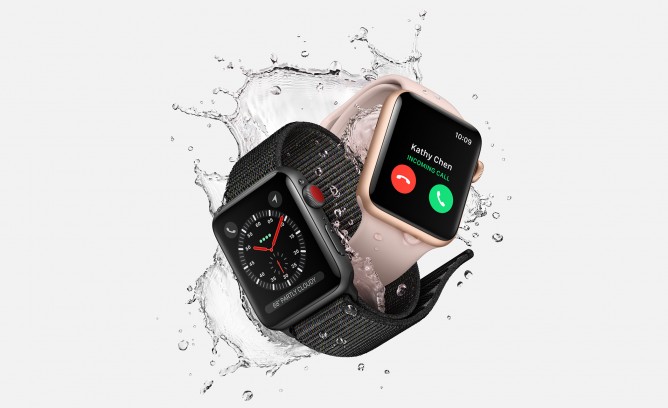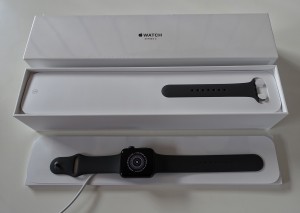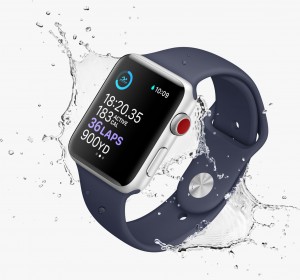
When Apple announced their very first Apple Watch, I was far from impressed. Back in those days, I was a proud supporter of Pebble smartwatch and so I chose to get their Pebble Time Steel instead of Apple’s shiny new product. One visit to Apple Store to play around with Apple Watch demo unit reinforced my opinion that it’s not a smartwatch I’m keen to use. It was annoyingly slow and third party apps had very limited usability.
I couldn’t believe myself when I read the news about Fitbit acquiring Pebble. Even more shock when I learned that existing Pebble smartwatches will be reduced to limited functionality after Pebble servers are no longer running. It brought me to an important aspect to modern product relying on online login: once the creators are no longer in business, our products will either stop working, or reduced to limited functionality. From that moment, I knew that eventually I would get Apple Watch. Yet I still chose not to get Series 2 and opted to wait another cycle.
After months of waiting, I decided to get Apple Watch Series 3 with LTE connection on the first day of pre-order. I wasn’t really sure how useful this LTE connection would be, so I even considered to get Series 3 without LTE. I ended up getting LTE model for reasons totally unrelated to LTE. One, LTE model has 16GB internal storage instead of the standard 8GB. Two, the LTE model has the back sensor from ceramic material.
After doing my pre-order, I had my second doubt about my size choice. I chose 42mm model, but was worried that it might be too big for my wrist. After all, my previous favourite smartwatch was Pebble Time Round, which looks thin and sleek.
 On the first day of availability, I got my Apple Watch Series 3 in a sleek white box. In the box, we get the Apple Watch itself, the default sport band in 2 sizes and magnetic charger with 1m cable.
On the first day of availability, I got my Apple Watch Series 3 in a sleek white box. In the box, we get the Apple Watch itself, the default sport band in 2 sizes and magnetic charger with 1m cable.
The main unit of Apple Watch looks solid. I’m glad I chose the Aluminium Space Grey that looks very nice with the dark screen bezel. The sport band looks nice but nothing special. The back sensors with ceramic housing feels comfortable on my skin. I particularly like how the back of the watch feels less bumpy compared to my Fitbit Charge 2. The red dot on the digital crown looks awkward and out of place. I guess I just have to learn to ignore it.
The size of the 42mm model looks surprisingly good on my wrist. Certainly it looks way bigger than my old Pebble Time Round, but thanks to Apple’s rounded edges design, it doesn’t look as intimidating as I thought it would be.
Initial setup just to get the watch running is easy. Actually setting it up to fit our detailed preferences takes a lot more time. To my surprise, this watch has so many customisable settings. Setting up my initial set of apps, watch faces and complications took me good 2-3 hours until I was satisfied with the results. Just a small reminder, I never owned any previous versions of Apple Watch, so this first impression comes from the perspective of completely new user.
Apple Watch only offers limited number of watch faces and there is no easy way to add our own, other than using our photo as background but the information display itself remains the same. To handle customisations, Apple offer what they call as “Complications” which are basically sub section of a watch face that can display icon or more information from supporting apps. These Complications are very useful to display quick glance information such as weather and public transport schedule. We can also use it as shortcut for our most frequently used apps.
 For Activity monitoring, we are given three “rings” that we are supposed to close. They are movement ring, exercise ring and stand ring. Instead of counting our steps in a day, Apple choose to use kilojoules of energy as measurement of our “movement”, which is made possible thanks to the built-in heart rate sensor. We can customise our daily movement target. For exercise ring, we are expected to do at least 30 minutes of exercise each day. For stand ring, it counts how many hours in a day we stand or walk for at least one minute. The goal is to encourage us not to sit the whole day. There is no way to change the daily target for exercise and stand rings.
For Activity monitoring, we are given three “rings” that we are supposed to close. They are movement ring, exercise ring and stand ring. Instead of counting our steps in a day, Apple choose to use kilojoules of energy as measurement of our “movement”, which is made possible thanks to the built-in heart rate sensor. We can customise our daily movement target. For exercise ring, we are expected to do at least 30 minutes of exercise each day. For stand ring, it counts how many hours in a day we stand or walk for at least one minute. The goal is to encourage us not to sit the whole day. There is no way to change the daily target for exercise and stand rings.
WatchOS 4 will offer to sync our photos and music from iPhone. For photos, we can choose one album and we have to choose photo limit of 25, 100, 250 or 500 photos. For music, we can choose to sync multiple playlists and so far I couldn’t see any information about the maximum amount of songs or storage for music. I assume I could sync as many songs as my 16GB storage would allow.
The screen looks great and I could read the display just fine even under bright sunlight outdoor. It will automatically go off when we don’t use our watch to save battery. In my short experience, it’s doing reasonably good job in automatically detecting my hand movement to turn on the screen. Tapping the screen will also turn on the screen and we can choose in setting whether the screen should stay on for 15 or 70 seconds. So far I haven’t found myself using the digital crown much. I would push it as button sometimes, but I rarely need to turn its wheel other than when I use Maps app.
Since I’ve been using my new watch extensively today, I could not comment much (yet) about battery life. So far it seems told hold on just fine. Will write separate post on my everyday experience later.
As for the LTE connectivity, I haven’t used it yet. There are only 2 providers in Australia that support Apple Watch LTE, Telstra and Optus. I plan to check their plan costs later and see if I decide to port my number into one of them.
Overall, I quite like my new Apple Watch Series 3. Definitely looking forward to use it as my main smartwatch from now on.

Leave A Comment